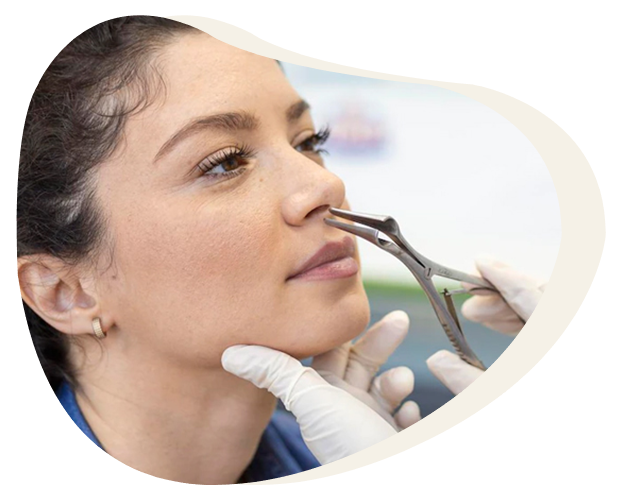Nasal Congestion Surgery
What is Nasal Congestion Surgery?
In 80% of healthy adults, there is a cycle called the nasal cycle. In this cycle, the inferior turbinate on one side of the nose grows while the one on the other side shrinks. This cycle repeats every 3-6 hours. Since the total air passing through the nose does not change, this cycle often goes unnoticed.
Conchae (lower nasal meatus), which have a very important role in nasal functions, should never be completely cut out. For this reason, today, techniques that do not damage the functional outer surface mucosa are preferred when reducing the turbinates (lower nasal meatus). The most commonly applied methods to reduce the size of the turbinates (lower nasal meatus) are reducing the volume of submucosal tissue without damaging the mucosa with radiofrequency and reducing the soft tissue and bone tissue under the mucosa by shaving (endoscopic reduction) in cases where there is growth in the bony part of the meatus.

Nasal Cartilage or Bone Curvature (Septum Deviation) Surgery
The whole of the bone and cartilage structures that form the midline of the nose and act as a wall between the two nostrils is called the nasal septum. Under ideal conditions, the septum should be in the midline and the right and left nasal cavities should be of equal width. However, in most people, the septum is not exactly in the midline, there are slight curvatures. Such slight curvatures do not cause any complaints. When all or part of the septum is significantly curved and shifts from the midline and affects breathing, it is defined as a disease. Deviated septum, which is usually caused by physical trauma, can sometimes occur during the period in the womb, sometimes due to genetic reasons and structurally.
In addition to causing difficulty in breathing, deviated septum can also cause other problems. In particular, not being able to breathe through the nose during sleep causes sleep disorders, but it can cause additional problems such as dry mouth, throat infections, snoring, chronic sinusitis, nosebleeds due to mouth breathing caused by deviation. Since deviation is usually accompanied by concha (nasal flesh) growth, concha intervention is also performed.
Contact Us!
Nasal Congestion Surgery Recovery Process
Surgery for nasal congestion usually involves procedures such as septoplasty or rhinoplasty and aims to correct structural problems that cause nasal congestion. The recovery process varies depending on the type of surgical intervention and the individual patient’s condition. After the operation, mild pain, swelling and the presence of tampons in the nose can usually be felt in the first few days. During the first weeks, the swelling and bruising inside the nose decreases, but full recovery can take several weeks to several months. Following the doctor’s instructions, avoiding certain activities and regular follow-up checks can support a successful recovery. Better breathing, aesthetic improvement and an increase in the patient’s overall quality of life are generally expected after nasal obstruction surgery.

Frequently Asked Questions
As with any surgical intervention, nasal obstruction surgery involves certain risks. Complications such as bleeding, infection, swelling and reactions to anesthesia are rare but can occur.
